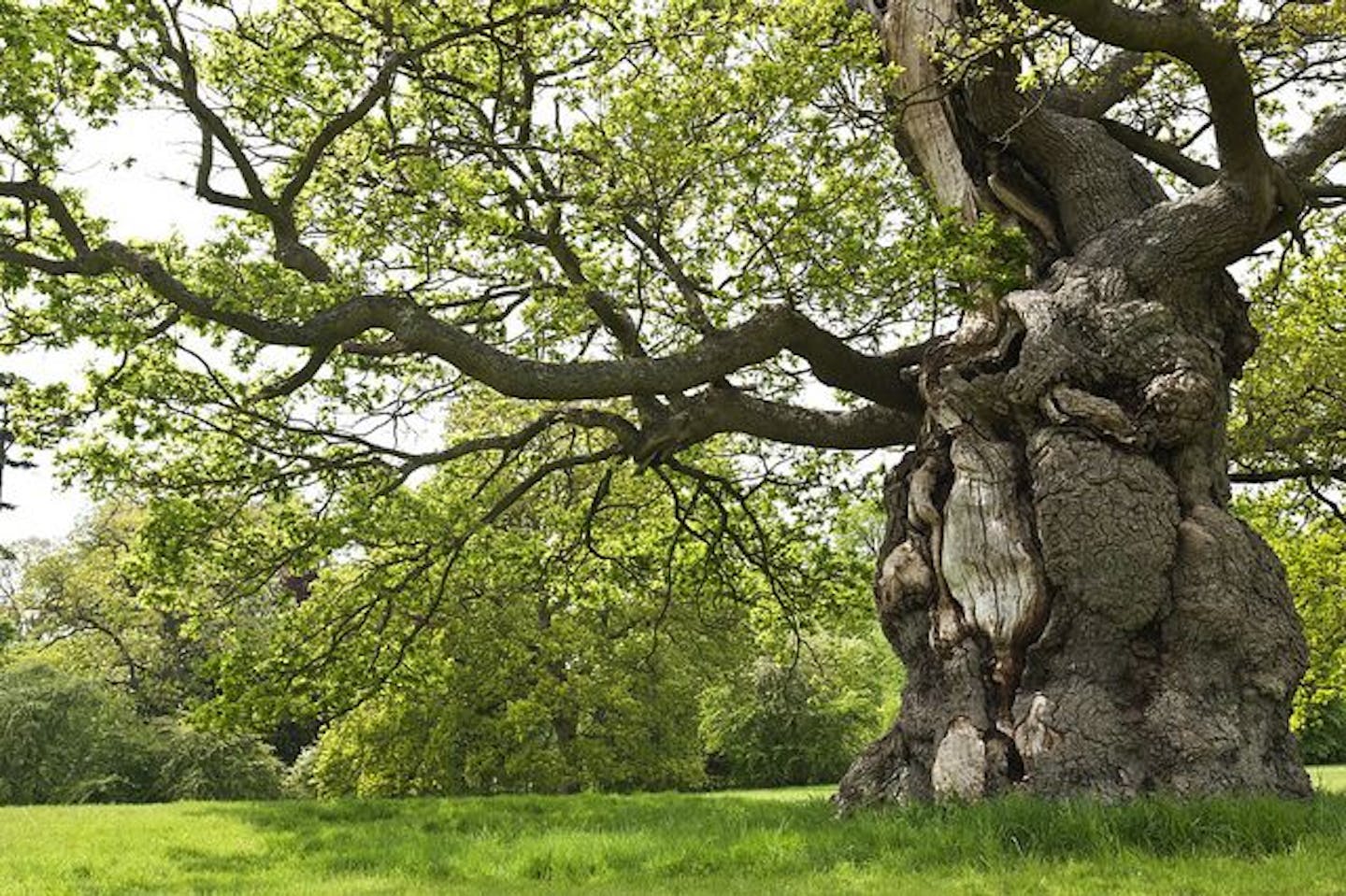Oak trees: kings of biodiversity
The oak tree in the photo above is said to be the oldest in the UK, at 1,046 years of age. It’s found on the grounds of Blenheim Palace, Oxfordshire.
Oak trees, often called the cathedrals of the natural world, have an exceptionally long life span and are only officially considered ‘old’ when they reach 700 years of age. This slow and methodical maturation leads not only to the fine quality of the wood, but also to the remarkable biodiversity of life that the trees support -- from large wildlife who graze on the acorns down to the multitude of fungal species that interact symbiotically with the trees. The oak providing starch to the underground fungi network and the fungi helping the oaks access nutrients is just one example of the unseen network at play.
The Pechanga great oak, a coastal live oak located on a reserve near Temecula, California is said to be the world’s oldest living oak and could well have been around for at least 2000 years. The Pechanga great oak is so large it looks like a mini forest all by itself!
The oak family has graced our planet for a remarkable 65 million years and is one of its most ancient species. This long-term survival can partly be put down to the design of acorns. The hard shell protects the seed (or to be correct, the fruit); naturally occurring high levels of tannic acid protect against fungal and insect threats.
In total there are around 500 species of oak worldwide with an alarming 78 species of oak are now classified as in danger of extinction. Sadly, this number is rising.
All native trees are beneficial to biodiversity and in the UK, the willow, birch, and hornbeam are some good examples. But the oak still remains the king of biodiversity.
Up to 2300 species are known to be associated with oak, and that doesn’t include all of the fungi, or any of the bacteria and other microorganisms which create a symbiotic home with the oak.
The 2300 species consist of some 38 bird species, 229 bryophytes, 108 fungi, 1178 invertebrates, 716 lichens, and 31 mammals. Of these species, 320 are found only on oak trees, and a further 229 species are rarely found on species other than oak.
The trees are also a favorite of wild bees and pollinators. Uniquely, they do not offer the traditional nectar from flowers but provide a similar substance that is secreted through gals growing on the tree. The oak’s main reason for secreting this secret substance is to attract insects that can help protect the tree from other harmful insects.
Even as the oak gets old and shows signs of age with holes and crevices appearing, this can benefit wildlife and is a perfect nesting spot for many species of bird such as the pied flycatcher or woodpecker. In turn, holes made by woodpeckers are ideal for bats to roost in.
Finally and to finish with a little folklore, oaks are struck by lightning more than any other trees. This was seen as hugely significant by our ancient Druidic ancestors who sought ‘awen’ or inspiration and believed it came through lightning. They named this shining moment of illumination as ‘courting the flash’. Awen was thought of as a flowing spirit or spirit energy manifesting in the form of an essence of life and producing moments of artistic inspiration and flow. So, for the Druids, the oak was seen as the conductor of universal revelation and as such was highly venerated.


